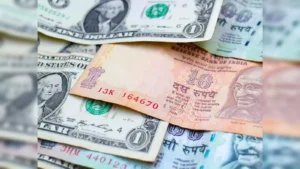Following Trump’s election victory, the dollar is expected to rise weekly.

As investors assessed the expected effects of Tuesday’s victory of Republican Donald Trump as U.S. president on the American economy, the dollar strengthened on Friday and headed for a weekly gain.
Trump’s policy promises, which include a crackdown on illegal immigration, lower taxes, business deregulation, and additional trade tariffs, are expected to increase inflation and growth, according to analysts. After reaching a four-month high of 105.44 on Wednesday, the dollar index has subsequently declined, in part because of profit-taking. At 105.01 on Friday, it was up 0.58% for the day and on track for a weekly increase of 0.68%.
According to data released Friday, a survey conducted prior to the start of November revealed that U.S. consumer sentiment reached a seven-month high Before the election.
Due in part to profit-taking, the dollar index surged to a four-month high of 105.44 on Wednesday but has since declined. On Friday, it was up 0.58% for the day at 105.01 and on track to rise 0.68% for the week.
In a pre-election survey, U.S. consumer sentiment reached a seven-month high in early November, according to data released Friday.
Next up is the October consumer pricing data, which is scheduled for release on Wednesday. The Federal Reserve made the widely anticipated 25 basis point rate decrease. The U.S. central bank, according to chair Jerome Powell, will not make any assumptions about the effects of any policies implemented by the next administration.
The widening interest rate gap with the US is predicted to hurt the yen, and Japan’s central bank may decide to hike rates as early as December to keep the currency from plunging back to three-decade lows.
Beijing announced a $10 trillion ($1.4 trillion) debt package on Friday to alleviate local governments’ financial burdens and boost faltering economic growth, which caused the value of the Chinese yuan to decline.
Rupee falls to its lowest point ever, 84, versus the US dollar: causes and prospects

On Friday, the rupee closed at 84.07, over the 84 per US dollar barrier for the first time. The decline in the rupee coincided with fears about a spike in oil prices, withdrawals from international institutional investors, and increased demand for the US dollar from overseas banks.
Why are overseas investors liquidating their holdings?
Following the announcement of monetary and fiscal measures by Chinese authorities to boost the slowing economy, foreign portfolio investors (FPIs) have been adopting the “Sell India, Buy China” approach. As of this writing, FPIs have sold Rs 1,635 crore in debt and Rs 58,711 crore in stocks as of October 11.
What was the rupee’s decline?
The local currency fell to 84.10 during the day after closing at 84.07 versus the US dollar on Friday. The rupee closed at 83.98 to the dollar on Thursday. Because the RBI has been defending the level for the past two months, analysts claimed the rupee has not dropped below 84.
What caused the slide to occur?
Concerns over rising crude oil prices, outflows of foreign funds to China, and a rise in demand for US dollars from overseas banks were the primary causes of the rupee’s decline. However, a steep decline in the rupee was averted by the overnight lowering of the US dollar index. The US’s higher-than-expected weekly unemployment claims statistics overshadowed the country’s lower-than-expected inflation, which caused the dollar to decline.
How is the rupee expected to perform?
Because crude oil prices are unpredictable and the dollar index fluctuates, analysts anticipate that the rupee will continue to be volatile.
VP Research analyst Jateen Trivedi of LKP Securities said the rupee might continue to decline toward 84.25-84.35, particularly if it stays below 84. It is anticipated to encounter resistance at approximately 83.70-83.80 levels and support at 84.20-84.35 levels.
